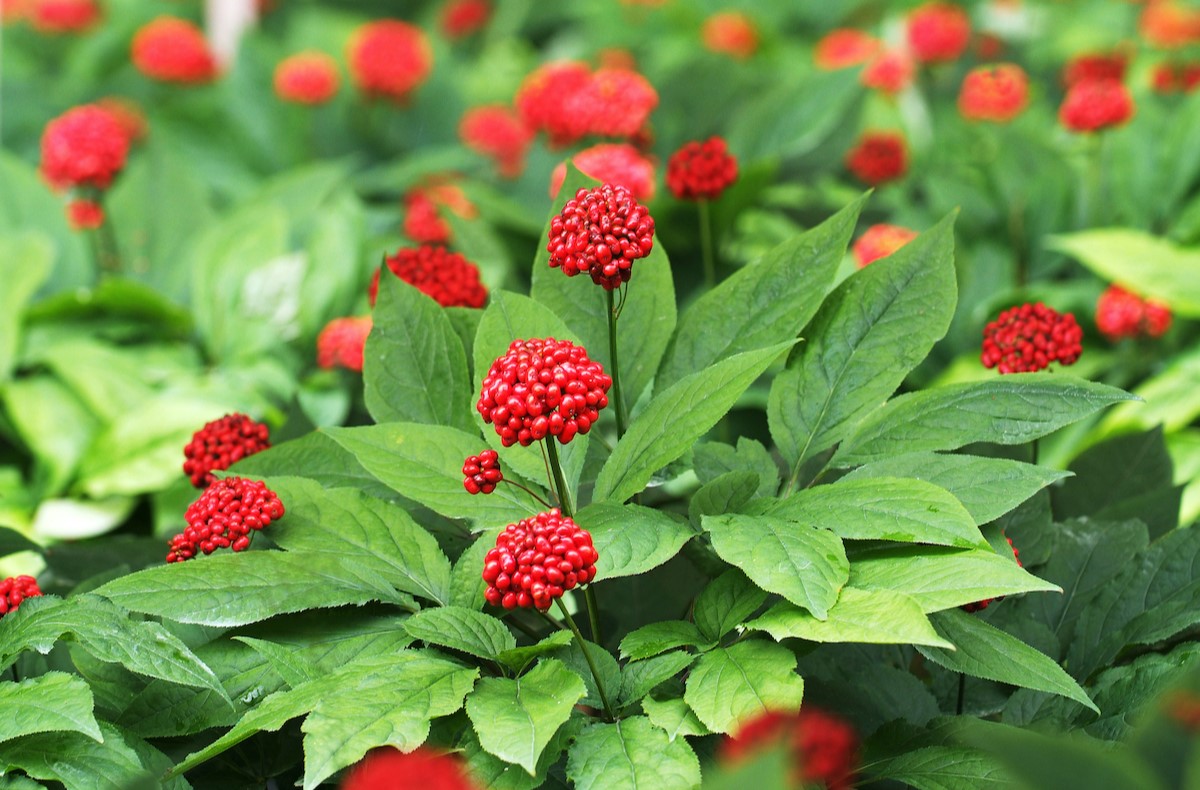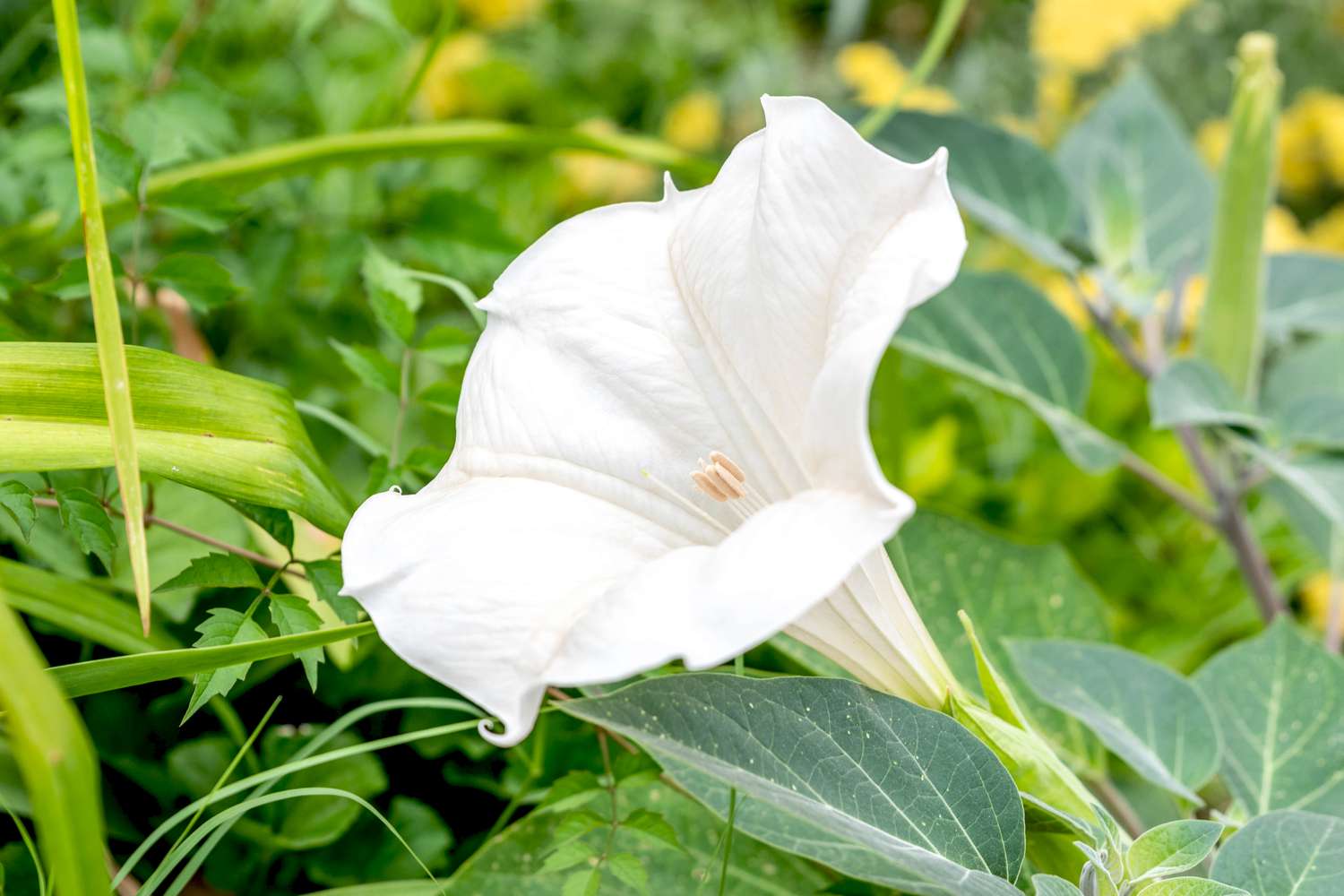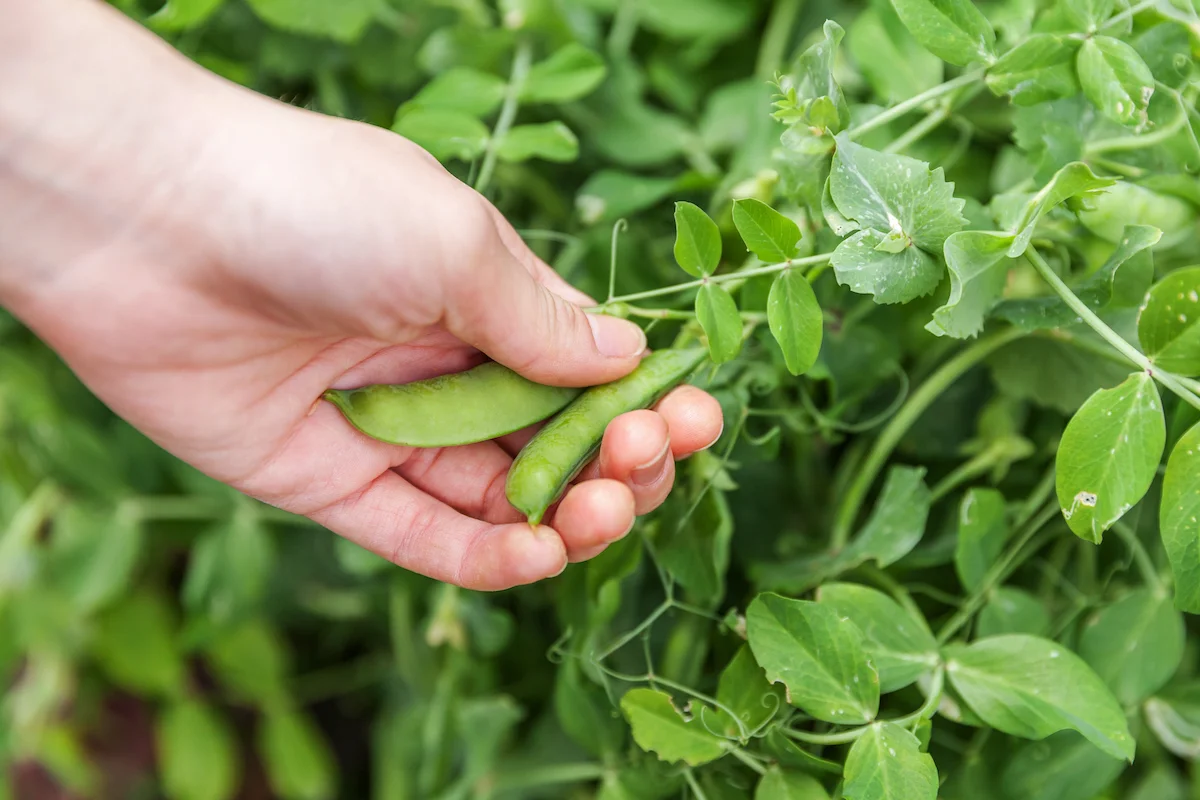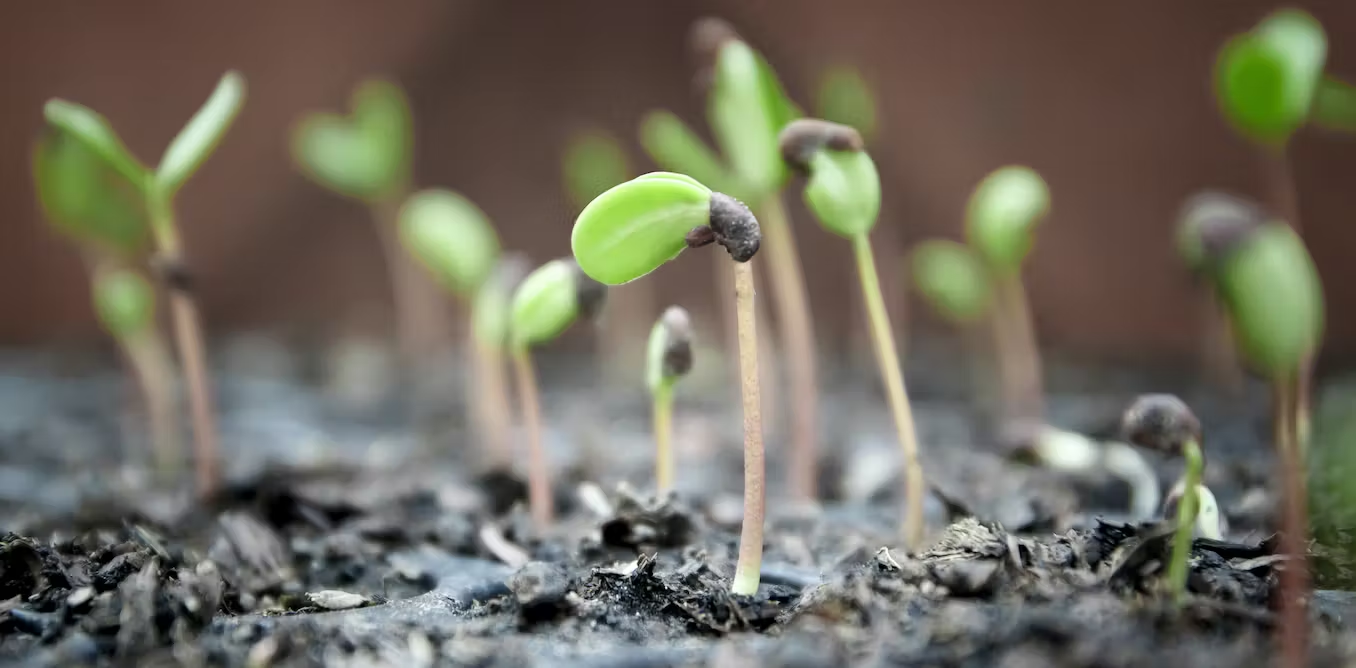Home>Garden Essentials>When To Plant Grass Seed In Ga


Garden Essentials
When To Plant Grass Seed In Ga
Modified: March 16, 2024
Looking to plant grass seed in your Georgia garden? Learn the best time to start planting and get tips for successful growth and maintenance.
(Many of the links in this article redirect to a specific reviewed product. Your purchase of these products through affiliate links helps to generate commission for Storables.com, at no extra cost. Learn more)
Introduction
Gardening enthusiasts in Georgia know the importance of a lush, green lawn. A beautiful and well-maintained lawn not only enhances the curb appeal of a property but also provides a space for outdoor activities and relaxation. One crucial step in achieving a vibrant lawn is planting grass seed at the right time.
Georgia’s diverse climate, with its hot summers and mild winters, presents unique challenges when it comes to choosing the optimal time to plant grass seed. Understanding the region’s climate, as well as considering soil conditions and grass species, is key to successful seeding and establishment.
In this article, we will explore the best times to plant grass seed in Georgia and provide valuable tips for ensuring successful germination and growth. Whether you’re starting a new lawn or overseeding an existing one, understanding the timing and techniques will set you up for a healthy and vibrant lawn to enjoy for years to come.
Key Takeaways:
- Choose the right time to plant grass seed in Georgia based on the specific grass species. Warm-season grasses thrive in hot summers, while cool-season grasses are better suited for shaded areas or cooler regions.
- Proper soil preparation, high-quality seed selection, and watering routine are essential for successful grass seed planting in Georgia. Address common challenges promptly and seek local expert advice for a vibrant and healthy lawn.
Read more: When To Plant Datura Seeds
Understanding Grass Seed in Georgia
Before diving into the best times to plant grass seed in Georgia, it’s essential to understand the types of grass that thrive in the region. Georgia’s climate is characterized by hot and humid summers, cool and mild winters, and moderate rainfall throughout the year.
Several grass species are well-suited to Georgia’s climate, including Bermuda grass, Zoysia grass, Centipede grass, and Tall Fescue. Each species has its own characteristics and requirements, so it’s important to choose the right grass seed for your specific needs.
Bermuda grass is a popular warm-season grass that thrives in Georgia’s heat and humidity. It is known for its excellent drought tolerance and ability to recover quickly from wear and tear. Zoysia grass is another warm-season option that offers a dense, luxurious turf. It performs well in both sun and shade and has good tolerance to drought and heavy foot traffic.
Centipede grass is a low-maintenance warm-season grass that excels in Georgia’s acidic and sandy soils. It has a medium texture and requires less water and fertilizer compared to other grasses. Tall Fescue, on the other hand, is a cool-season grass that is ideal for shaded areas and can handle Georgia’s colder winters.
Understanding the characteristics of these grass species will help you select the most appropriate grass seed for your lawn. Consider factors such as shade exposure, soil type, maintenance requirements, and aesthetic preferences when making your choice.
Moreover, it’s crucial to consider the specific microclimate of your location within Georgia. Different parts of the state may have varying temperature ranges and rainfall patterns, which can affect grass growth and establishment.
With a good understanding of the grass species and climate considerations in Georgia, you can make informed decisions about when to plant grass seed and how to maintain a vibrant and healthy lawn.
Climate and Season Considerations
Georgia’s climate is characterized by a mix of warm-season and cool-season grasses, which means that the timing of planting grass seed depends on the specific type of grass you choose. Understanding the seasonal changes and temperature patterns in your region will help you determine the best time to plant.
Georgia experiences humid and hot summers, with temperatures often exceeding 90°F (32°C). The warm-season grasses, such as Bermuda grass and Zoysia grass, thrive in these conditions. They are known for their ability to tolerate high temperatures and grow vigorously during the summer months.
On the other hand, cool-season grasses, like Tall Fescue, are better suited for the cooler months in Georgia. These grasses remain green throughout the year and can tolerate mild winters. Planting cool-season grass seed in early fall allows the grass to establish strong roots before the colder temperatures arrive.
When considering the climate and seasons in Georgia, it’s important to note the transition periods between warm and cool seasons. These transitional periods – spring and fall – offer favorable conditions for both types of grasses.
Spring is a transition from cooler temperatures to warmer weather, providing an ideal time for warm-season grasses to come out of their dormant state and start growing. This period also offers sufficient time for the grass to establish before the intense heat of summer arrives.
Fall, on the other hand, is a transition from warm to cooler temperatures, making it an excellent time to plant cool-season grasses. The moderate temperatures and increased rainfall create optimal conditions for seed germination and root development.
Understanding the specific climate and seasonal patterns in your region of Georgia will help you determine the most suitable time to plant grass seed. Factors such as average temperatures, humidity levels, and rainfall should also be taken into consideration when planning your lawn maintenance schedule.
By aligning your grass seed planting with the appropriate seasons and climate conditions, you can ensure successful germination and establishment, leading to a healthy and vibrant lawn throughout the year.
Best Times to Plant Grass Seed
Choosing the right time to plant grass seed in Georgia is crucial for maximizing the chances of successful germination and establishing a healthy lawn. The timing will vary depending on whether you’re planting warm-season or cool-season grass seed.
For warm-season grasses like Bermuda grass and Zoysia grass, the best time to plant is during late spring or early summer. Ideally, the soil temperature should be consistently above 60°F (15°C) for successful seed germination and root development. Planting during this period allows the grass to take advantage of the warm and humid summer months, promoting rapid growth and establishment.
Cool-season grasses such as Tall Fescue should be planted during the fall season. Late summer to early fall is an ideal time to sow cool-season grass seed in Georgia. The soil temperatures are cooler, ranging from 50°F to 65°F (10°C to 18°C), which reduces the stress on the grass and allows for better root growth. Additionally, the increased rainfall and moderate temperatures in fall provide ideal conditions for seed germination and establishment.
While late spring and early fall are generally the best times to plant grass seed in Georgia, it’s important to monitor soil temperatures and weather conditions to ensure optimal conditions for germination. Using a soil thermometer can help you determine if the soil has reached the appropriate temperature for planting.
It’s worth noting that grass seed can also be planted in late winter for warm-season grasses and early spring for cool-season grasses. However, these periods come with additional challenges, such as lower soil temperatures and higher weed competition. If you choose to plant during these times, be prepared to provide extra care and maintenance to ensure the success of your grass seed.
Regardless of the season you choose to plant, it’s essential to avoid extreme weather conditions such as drought, heavy rainfall, or freezing temperatures. These conditions can hinder seed germination and lead to poor establishment.
By understanding the best times to plant grass seed for your chosen grass species, you can increase the likelihood of a successful lawn establishment. Proper timing will provide your grass seed with the optimal conditions for germination, growth, and long-term health.
Preparing the Soil
One of the most important steps in planting grass seed in Georgia is preparing the soil properly. A well-prepared soil provides an optimal environment for seed germination and root development, leading to a healthy and vibrant lawn. Here are some essential steps to take when preparing the soil for planting grass seed:
- Clear the area: Start by clearing the area of any existing vegetation, including weeds, grass, and debris. This can be done by using a rake or a sod cutter. Clearing the area allows for better seed-to-soil contact and reduces competition for nutrients and sunlight.
- Test the soil: Conduct a soil test to determine its pH level and nutrient content. This will help you understand if any amendments, such as lime or fertilizer, are needed to create optimal soil conditions for seed germination. Soil testing kits can be purchased from garden centers or you can send samples to a local agricultural extension office for analysis.
- Aerate the soil: If the soil is compacted, it’s important to aerate it before planting grass seed. Aerating the soil involves creating small holes or channels in the ground to improve air circulation, water penetration, and root development. You can use a manual or mechanical aerator for this purpose.
- Loosen the soil: Use a garden rake or a tiller to loosen the top layer of soil. This will help break up any compacted soil and create a loose, well-draining bed for the grass seed. Remove any rocks, roots, or large clumps of soil during this process.
- Amend the soil: Based on the results of your soil test, add any necessary amendments to adjust the pH level and improve nutrient availability. Lime can be added to raise the pH level in acidic soils, while sulfur or elemental sulfur can be used to lower the pH in alkaline soils. Follow the recommendations from your soil test for proper application rates.
- Level the soil: Use a garden rake to level the soil, ensuring it is smooth and even. This will help provide a uniform surface for seed planting and prevent water pooling or uneven growth. Fill in any low spots and remove excess soil from high areas to achieve a level surface.
By following these steps and properly preparing the soil, you create a favorable environment for grass seed germination and establishment. Well-prepared soil will offer adequate drainage, nutrient availability, and root penetration, leading to a healthier and more resilient lawn.
The best time to plant grass seed in Georgia is in the fall, between mid-September and mid-November. This allows the seeds to establish before the heat of summer. Keep the soil moist for successful germination.
Read more: When To Plant Rhubarb Seeds
Seed Selection and Buying Tips
Choosing the right grass seed is crucial for achieving a healthy and attractive lawn in Georgia. There are several factors to consider when selecting grass seed, including grass species, seed quality, and specific lawn requirements. Here are some tips to help you make an informed decision when buying grass seed:
- Choose the right grass species: Consider the climate, soil type, shade exposure, and intended use of your lawn. Warm-season grasses like Bermuda grass and Zoysia grass are well-suited for the hot summers in Georgia, while cool-season grasses like Tall Fescue perform better in shaded areas or cooler regions.
- Buy high-quality seed: Look for grass seed that is certified by a reputable seed testing agency. This ensures that the seed has met certain quality standards in terms of purity, germination rate, and lack of weed seed contamination. High-quality seed will have a higher chance of successful germination and establishment.
- Consider seed blends or mixtures: Seed blends or mixtures can offer the advantages of multiple grass species. They combine different grass varieties that are well-suited for specific conditions such as drought tolerance, shade tolerance, or high traffic areas.
- Check the seed label: Read the seed label carefully to understand the contents, including the percentage of pure seed, weed seed, and inert matter. Avoid seed that has a high percentage of weed seed or inert matter, as this can lead to weed problems or poor germination.
- Determine the seed rate: The recommended seed rate varies depending on the grass species and the desired lawn density. Consider the specific recommendations provided by the seed manufacturer to ensure the appropriate amount of seed is applied for optimal results.
- Consider coated or pre-inoculated seed: Some grass seed varieties come with a seed coating or pre-inoculation, which provides benefits such as improved germination and disease resistance. Coated seed can also be easier to spread evenly during planting.
- Buy from reputable sources: Purchase grass seed from reputable garden centers, nurseries, or online suppliers. They are more likely to provide high-quality seed and offer expert advice on seed selection and lawn maintenance.
By considering these tips and choosing the right grass seed for your specific lawn needs, you can increase the chances of a successful lawn establishment. Remember to follow the manufacturer’s instructions regarding seed rate, planting techniques, and maintenance practices to ensure the best possible results.
Planting Methods and Techniques
Proper planting methods and techniques are essential for successful germination and establishment of grass seed in Georgia. Follow these steps to ensure your grass seed has the best chance of thriving:
- Prepare the soil: As discussed earlier, prepare the soil by clearing the area, testing and amending the soil if needed, and leveling the surface. This will create a favorable environment for seed germination and root development.
- Choose the right seeding method: The two common methods for planting grass seed are broadcast seeding and using a slit seeder. Broadcast seeding involves spreading the seed evenly over the prepared soil surface by hand or using a spreader. A slit seeder is a specialized machine that cuts slits in the soil and drops the seed directly into the slits for better seed-to-soil contact.
- Divide the seed into two applications: If you are overseeding an existing lawn, it is advisable to divide the seed into two applications. Apply half of the seed in one direction, such as north to south, and the other half in a perpendicular direction, such as east to west. This ensures even distribution and coverage.
- Spread the seed evenly: Whether using broadcast seeding or a slit seeder, strive for even distribution of the grass seed. This helps prevent patchy growth and ensures consistent coverage across the lawn.
- Seed at the recommended rate: Follow the recommended seed rate provided by the manufacturer. Applying too little seed may result in thin and sparse growth, while applying too much seed can lead to overcrowding and competition for resources.
- Rake the seed: After spreading the seed, lightly rake the ground with a garden rake or a drag mat to ensure good seed-to-soil contact. This helps the seed settle into the soil and improves germination rates.
- Water the seeded area: Immediately after planting, water the seeded area thoroughly. This helps settle the soil and provide moisture for seed germination. Keep the soil consistently moist but not waterlogged during the germination period.
Following these planting methods and techniques will give your grass seed the best chance of successful germination and establishment. Remember to adjust your watering schedule as needed, especially during periods of drought or excessive rainfall. Monitor the growth progress and provide additional care as necessary to ensure a healthy and thriving lawn.
Watering and Maintenance
Proper watering and maintenance practices are crucial for the successful growth and establishment of your newly planted grass seed in Georgia. Follow these guidelines to ensure a healthy and vibrant lawn:
- Establish a watering routine: After planting the grass seed, water the area thoroughly to ensure the soil is evenly moist. During the germination period, it is important to keep the soil consistently moist but not saturated. Watering deeply and infrequently is generally better than shallow and frequent watering, as it encourages deep root growth.
- Monitor soil moisture: Regularly check the soil moisture level to determine when to water. Insert a finger about one inch into the soil, and if it feels dry, it’s time to water. Use a sprinkler or soaker hose to provide even coverage and avoid creating puddles or runoff.
- Adjust watering as the grass grows: As the grass starts to establish and grow, gradually reduce the frequency of watering while increasing the amount of water applied. This encourages deeper root growth and strengthens the grass plants.
- Mow at the proper height: Once the grass has reached a height of about 3 to 4 inches, it is time to mow for the first time. Set your mower blades to a height of about 2 to 3 inches, depending on the grass species. Regular mowing at the appropriate height helps promote denser growth and discourages weed invasion.
- Fertilize at the right time: After the grass has been growing for a few weeks, consider applying a slow-release fertilizer according to the specific needs of your grass species. Follow the manufacturer’s instructions for proper application rates and timing.
- Control weeds: Weed competition can hinder the growth of your newly planted grass seed. Monitor the lawn regularly and remove any weeds that have emerged. Avoid using herbicides until the new grass is well established, as they can harm young grass plants.
- Aerate and overseed as needed: Over time, the soil may become compacted, and bare or thin spots may appear. If necessary, aerate the lawn to improve soil compaction, and overseed the bare areas to promote thick and healthy grass growth.
- Continue regular maintenance: Even after the grass has established, it is important to maintain a regular maintenance routine. This includes proper watering, mowing, fertilizing, and weed control throughout the year to keep your lawn healthy and attractive.
By following these watering and maintenance practices, you will encourage strong and healthy growth, resulting in a lush and vibrant lawn in Georgia. Remember that consistency and regular care are key to achieving long-term success.
Common Challenges and Troubleshooting
While planting grass seed in Georgia can yield beautiful lawns, there are common challenges that gardeners may encounter. Understanding these challenges and troubleshooting them promptly can help ensure the success of your lawn. Here are some common issues and their solutions:
- Poor germination: If you notice patchy or uneven growth, it could be due to poor seed germination. Ensure that the soil is consistently moist during the germination period and that the seed has proper seed-to-soil contact. Consider overseeding the affected areas to fill in the gaps.
- Weed competition: Weeds can compete with grass seedlings for nutrients, sunlight, and water. Regularly monitor the lawn for weeds and remove them promptly by hand or using appropriate herbicides. Avoid using herbicides until the grass seed has established, as it can harm young grass plants.
- Pest infestations: Insects and pests, such as grubs, can damage the grass seedlings. Monitor the lawn for signs of pest activity, such as chewed leaves or wilting plants. Consult with a local garden center or extension office to identify the pests and determine the appropriate control methods.
- Disease issues: Certain diseases, such as brown patch or dollar spot, can affect the health and appearance of your grass seedlings. Ensure proper lawn maintenance practices, such as proper watering and mowing, to minimize disease susceptibility. If necessary, consult with a professional to identify the disease and recommend the appropriate treatment.
- Poor soil quality: If the soil lacks essential nutrients or has poor drainage, it can affect the growth of your grass seed. Conduct a soil test to determine any deficiencies and amend the soil accordingly. Improve drainage by aerating the lawn and avoiding overwatering.
- Uneven growth or bare spots: Uneven growth or bare spots may be caused by a variety of factors, including poor soil preparation, improper seeding techniques, or compaction. Rake the affected areas to loosen the soil, overseed as needed, and ensure proper watering and maintenance practices to encourage uniform growth.
- Excessive thatch buildup: Thatch buildup, a layer of dead organic material between the grass blades and soil, can hinder the growth and health of your grass. Periodically dethatch the lawn using a rake or power dethatcher to remove excessive thatch and allow better air and water penetration.
If you encounter any of these challenges in your lawn, remember that prompt action and proper maintenance can help resolve the issues. Don’t hesitate to seek advice from local experts, such as garden centers or extension offices, for specific recommendations based on your region and grass species.
By addressing these common challenges and troubleshooting them effectively, you can overcome obstacles and maintain a healthy and vibrant lawn in Georgia for years to come.
Read more: When To Plant Elderberry Seeds
Conclusion
Planting grass seed in Georgia requires careful consideration of the climate, grass species, and proper maintenance practices. By understanding the unique challenges and optimal timing for planting, you can establish a healthy and vibrant lawn to enjoy throughout the year.
Choosing the right grass species, such as Bermuda grass, Zoysia grass, Centipede grass, or Tall Fescue, is essential for success in Georgia’s climate. Warm-season grasses thrive in the hot summers, while cool-season grasses perform better in shaded areas or cooler regions.
To ensure successful germination and establishment, it is crucial to prepare the soil properly by clearing the area, testing and amending the soil if needed, and creating a level surface. Additionally, selecting high-quality grass seed from reputable sources and following the recommended planting methods and techniques will increase your chances of success.
Watering and maintaining your newly planted grass seed is vital for its growth and long-term health. Establish a watering routine, adjust watering as the grass grows, and maintain proper mowing, fertilization, and weed control practices to keep your lawn looking its best.
While common challenges like poor germination, weed competition, pests, and disease may arise, prompt troubleshooting and proper lawn care can overcome these obstacles. By addressing these issues promptly and maintaining a regular maintenance routine, you can enjoy a lush and vibrant lawn in Georgia.
Remember, each lawn is unique, so it is important to adapt these guidelines to your specific conditions and grass species. And don’t forget to seek guidance from local experts to ensure the best results for your Georgia lawn.
With the right knowledge and proper care, your lawn will become a source of pride and enjoyment, providing a beautiful outdoor space for relaxation and recreation.
Frequently Asked Questions about When To Plant Grass Seed In Ga
Was this page helpful?
At Storables.com, we guarantee accurate and reliable information. Our content, validated by Expert Board Contributors, is crafted following stringent Editorial Policies. We're committed to providing you with well-researched, expert-backed insights for all your informational needs.














0 thoughts on “When To Plant Grass Seed In Ga”